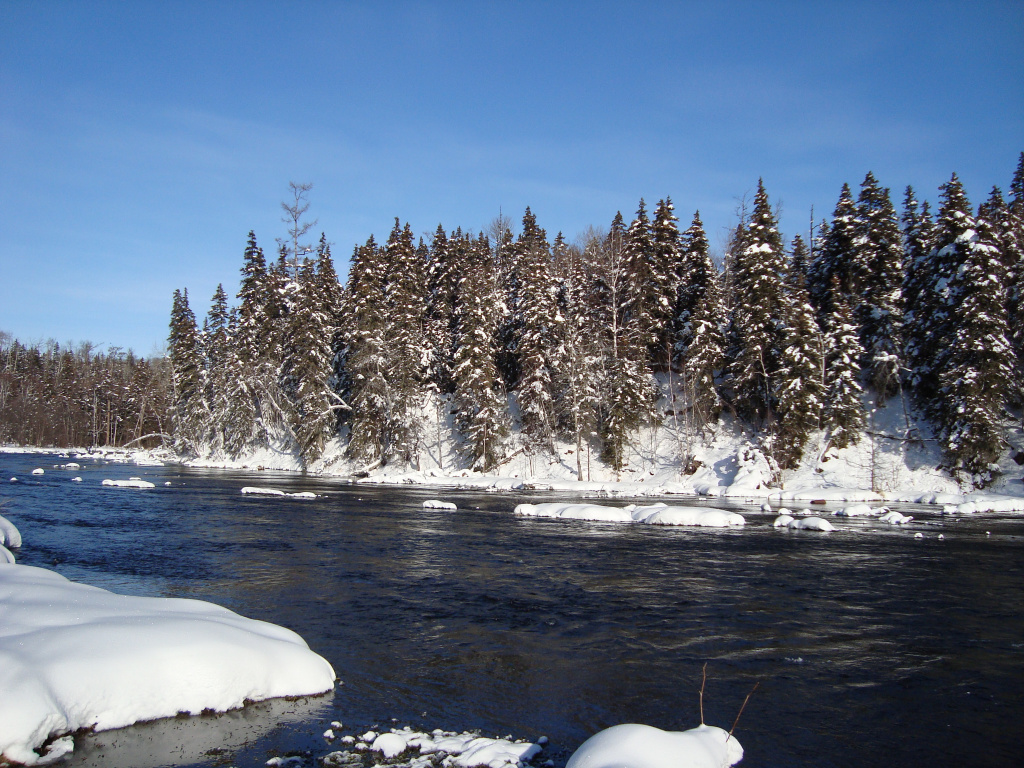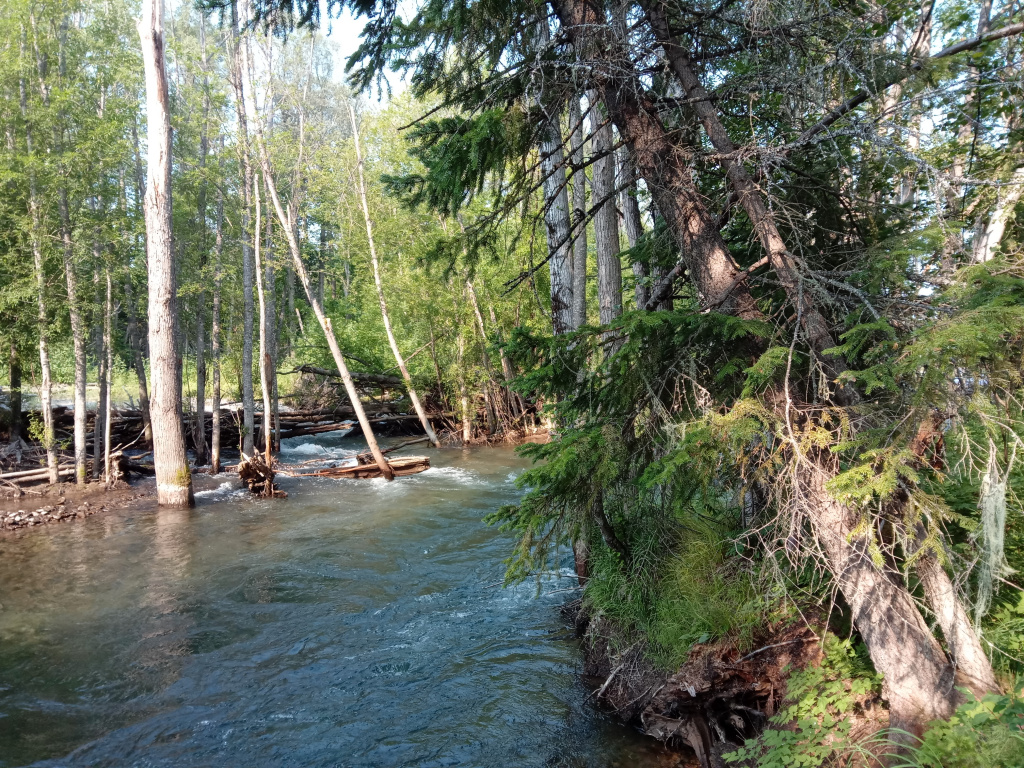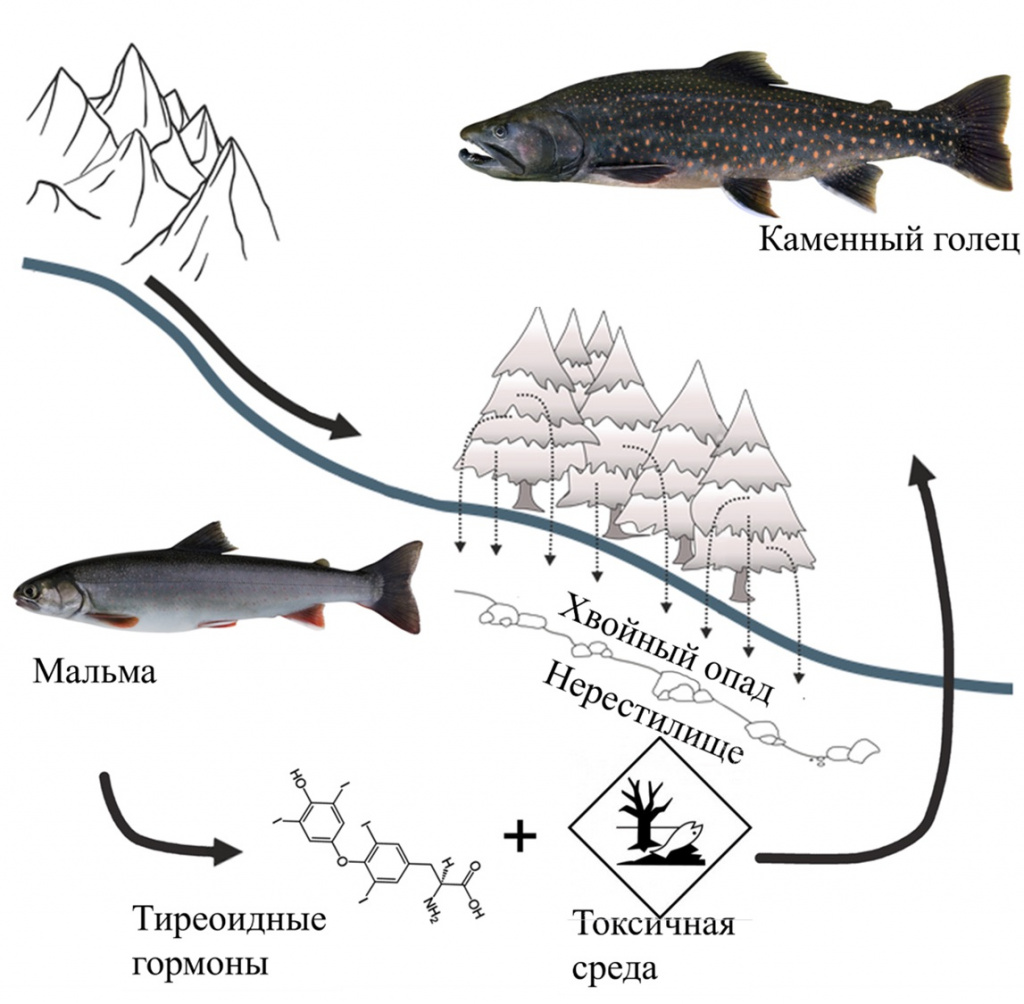
The project “Assessing the state of key habitats and developing recommendations for improving conservation measures for stone char, an endangered endemic of the Kamchatka River”, launched in 2021, reached a new level this spring. At the beginning of the new season, its participants - employees of the Kronotsky Reserve and the A.N. Severtsov Institute of Ecology and Evolution Problem of the Russian Academy of Sciences - assessed the research sites on a snowmobile.

During the expedition, water and soil samples will be collected for the subsequent determination of the organic composition. This will allow us to trace the dynamics of the composition of water in known spawning grounds of the fish.
The scientists also plan to determine the number of juveniles wintering in the spawning ground and assess the food supply available for fish during the snowy period.

“Determining the wintering conditions, the number of juveniles, and the available food supply allows us to evaluate the efficiency of reproduction. It is probable that in natural conditions it is low, the main risk factors are sludge - loose small accumulations of a mixture of ice and snow, freezing of watercourses, lack of food resources. With low reproduction efficiency but high food supply, one of the potential protection measures could be artificial reproduction on the spawning grounds. In world practice, there is experience in restoring local populations of salmon fish by introducing additional caviar taken from spawners from nearby watercourses to natural spawning grounds,” explained Grigory Markevich, senior researcher at the Kronotsky State Reserve.

Part of the research is planned to be carried out in March in the upper reaches of the Kamchatka River using anti-avalanche equipment and modern means of communication.
As a result of the project, new information about the biology, population structure, distribution of stone char has already been obtained, and places have been outlined that require close attention and further study.
The project is implemented with the support of World Fund for Nature Russia.

Reference:
Stone char (Salvenius kuznetsovi) is a large predatory fish that inhabits only the Kamchatka River with tributaries. It cannot be confused with other salmon fish because of its dark color with irregularly shaped spots. Over the past 40 years, the number of stone char has been constantly falling, which is probably due to habitat disturbance. In the 21st century, the species is in danger of extinction. Large spawning grounds have been preserved only in the tributaries of the Shchapin River in the Kronotsky Reserve, where logging has not been carried out.
Previously, specialists from the Kronotsky Reserve came to the conclusion that the formation of stone char as a species occurred due to the transition of its ancestor, Dolly Varden trout (Salvenius malma), to reproduction in small watercourses in the spruce forest zone. In 2021, a previously unknown spawning ground was put on record. This find confirmed the high degree of isolation of rock char from Dolly Varden trout and the hypothesis of its confinement to the watercourses of the taiga zone.

